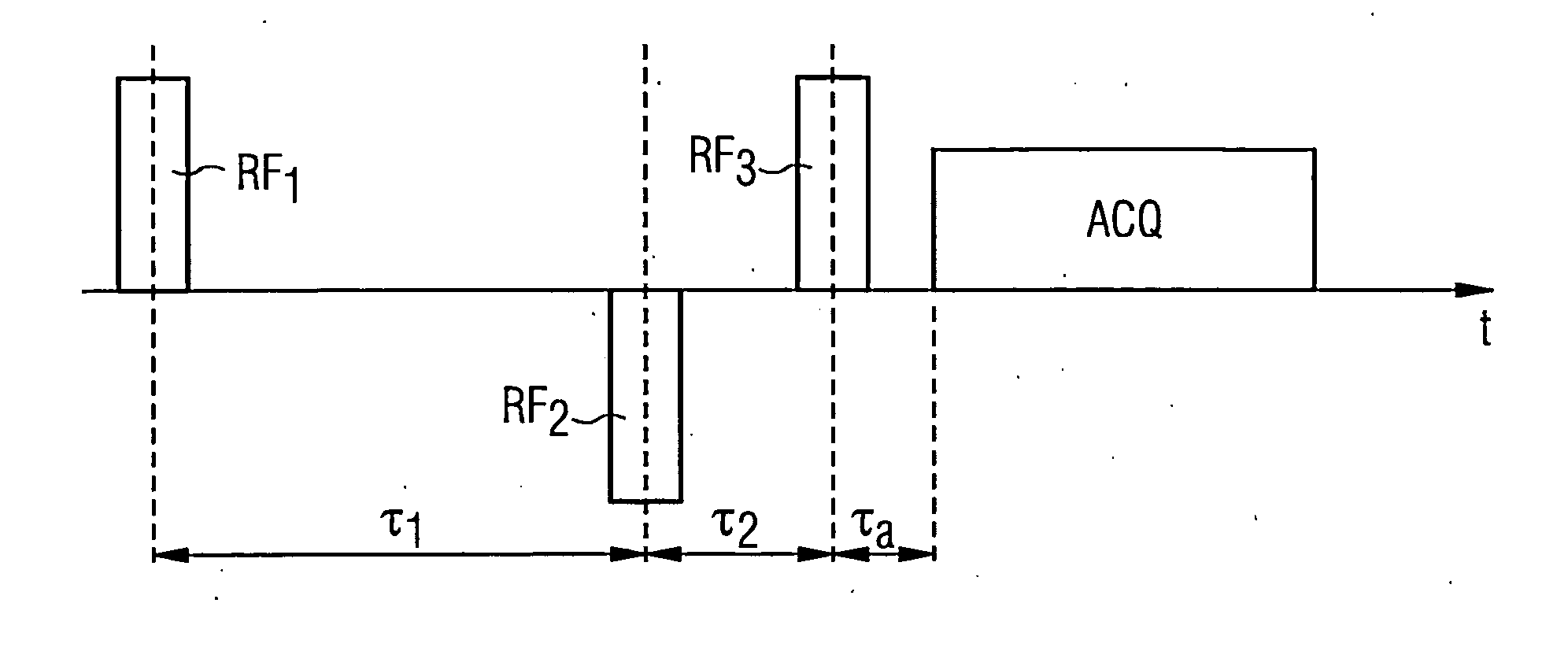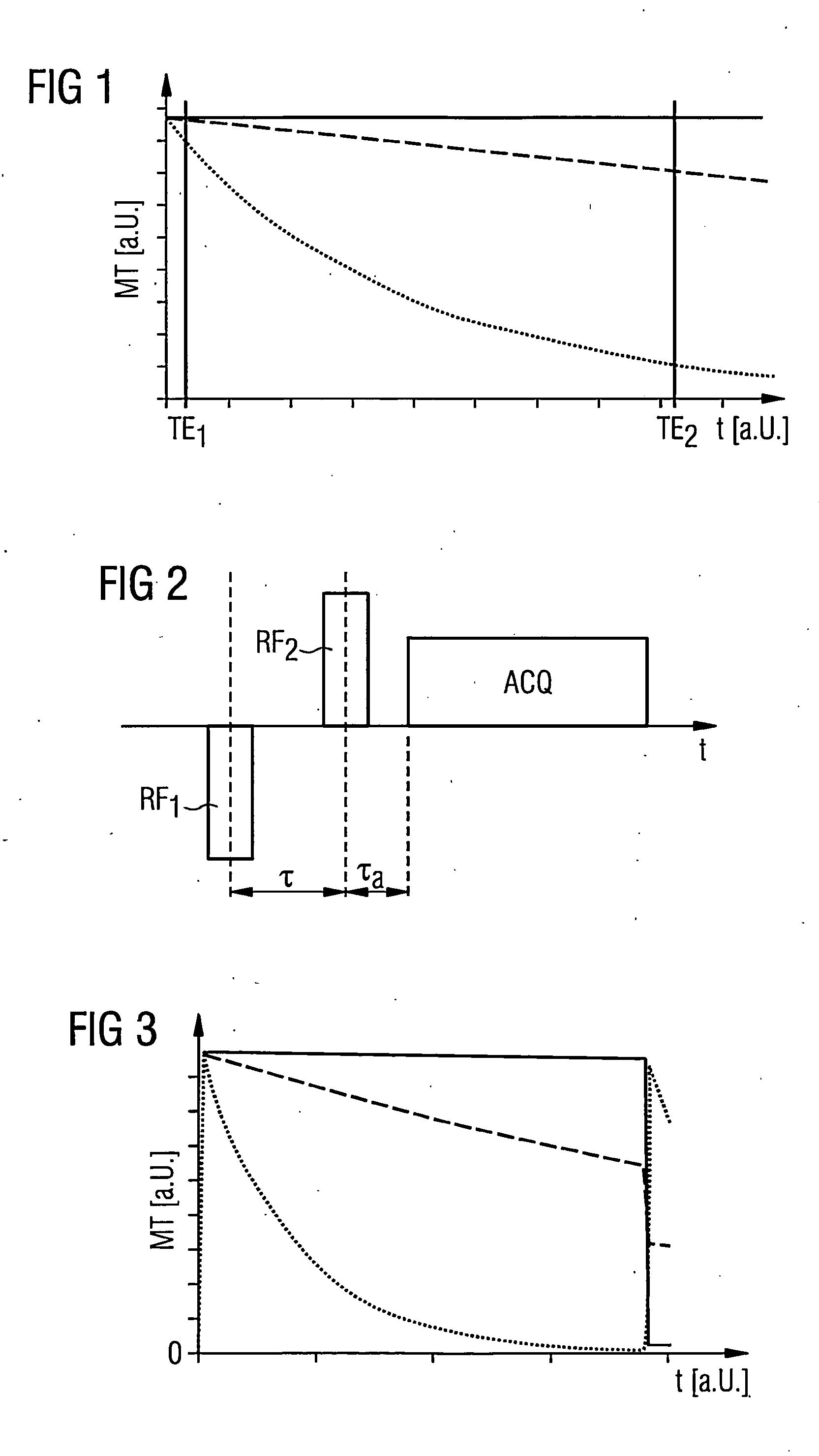Magnetic resonance system, operating method and control device to generate t2-weighted images using a pulse sequence with very short echo times
a pulse sequence and pulse sequence technology, applied in the field of magnetic resonance system, operating method and control device to generate t2weighted images, can solve the problems of not being able to generate tsub>2 and not being able to generate tsub>2, and achieve the effect of suppressing quickly and well
- Summary
- Abstract
- Description
- Claims
- Application Information
AI Technical Summary
Benefits of technology
Problems solved by technology
Method used
Image
Examples
Embodiment Construction
[0044]The contents of FIG. 1 has already been explained above.
[0045]The excitation and acquisition curve for a first variant of the method according to the invention in the form of a very simplified pulse sequence on only one axis is schematically presented in the pulse diagram in FIG. 2. The first two pulses are the magnetic resonance radio-frequency pulses RF1, RF2. The block shown after this on the time axis symbolizes the acquisition ACQ of the raw data. This acquisition ACQ takes place as a measurement of the FID signal. Since the two magnetic resonance radio-frequency pulses RF1, RF2 are not slice-selective, here the complete spatial coding takes place during the raw data acquisition in that gradient fields are switched in various directions. However, this procedure is known in principle to those skilled in the art and therefore does not need to be explained in detail herein.
[0046]In the method shown in FIG. 2, a pulse with the flip angle −α (i.e. with a phase rotated by 180° ...
PUM
 Login to View More
Login to View More Abstract
Description
Claims
Application Information
 Login to View More
Login to View More - R&D
- Intellectual Property
- Life Sciences
- Materials
- Tech Scout
- Unparalleled Data Quality
- Higher Quality Content
- 60% Fewer Hallucinations
Browse by: Latest US Patents, China's latest patents, Technical Efficacy Thesaurus, Application Domain, Technology Topic, Popular Technical Reports.
© 2025 PatSnap. All rights reserved.Legal|Privacy policy|Modern Slavery Act Transparency Statement|Sitemap|About US| Contact US: help@patsnap.com



